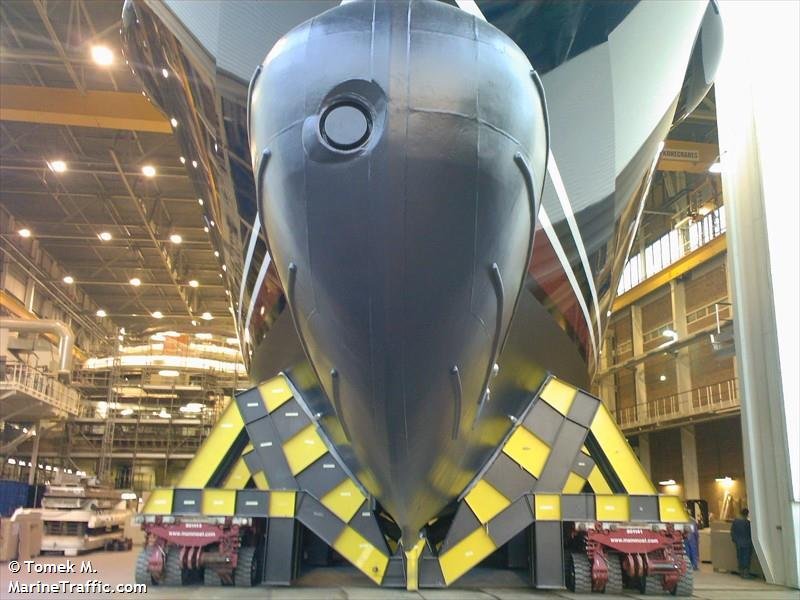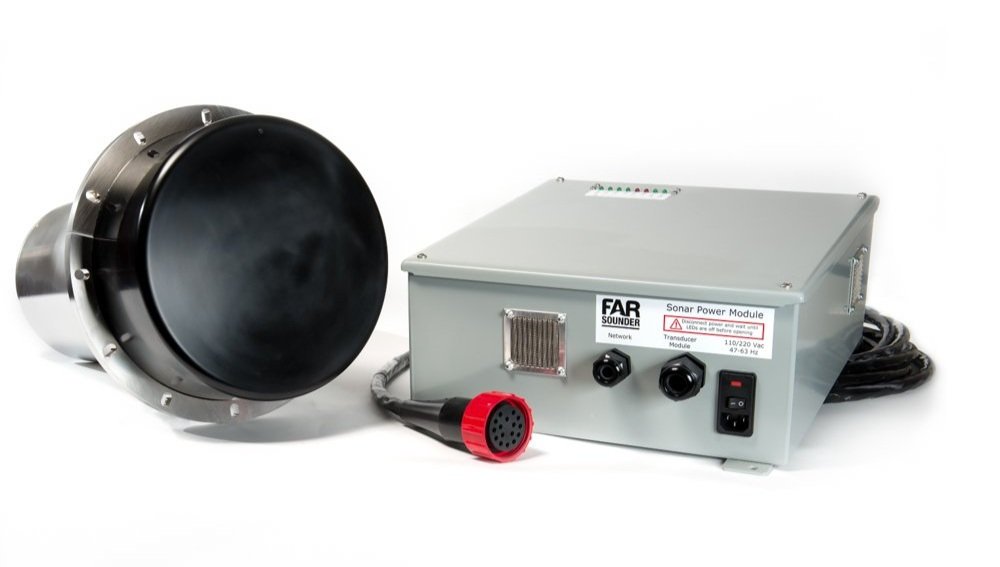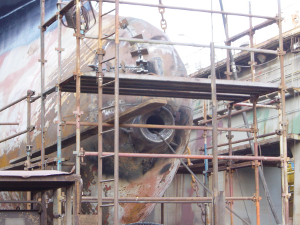Marine Biofouling: Cleaning and Prevention
Like any other sonar system, the array face on a FarSounder Argos Transducer Module can become fouled with marine growth. Keeping your Transducer Module’s array face clean from marine growth is important for optimal sonar performance. While simple cleaning methods can be used to remove growth, applying a coat of FoulFree to the urethane can significantly reduce the amount of fouling to be cleaned. This blog post covers the Do’s and Don’t of keeping your sonar clean of biofouling.
Cleaning Methods
The total amount of fouling experienced by a sonar depends upon where the vessel operates and how often it is underway. A vessel that mostly sits at the dock in the tropics is likely going to experience a lot more growth than one that is underway everyday in the North Sea. The former may require cleaning every month, whereas the latter may only need cleaning on a yearly basis.
The simplest way to clean the array face is to first gently scrape off any large material using a plastic putty knife. Then gently rub off any residue using a non-scratch cleaning pad like you might use to scrub dirty dishes.
Step 1: Use a plastick putty knife to remove growth.
Step 2: Use a scratch free cleaning pad to remove residue.
These tasks can be performed quickly by a diver or while the vessel is out of the water. In either case, be sure to use plastic or wooden tools and avoid a heavy hand to avoid risking damage to the array’s urethane. If in dry dock, avoid using a power washer or sand blaster, as it can permanently damage the array face.
Preventing Marine Growth with FoulFree
One method to reduce the amount of biofouling that needs to be cleaned is to apply a thin layer of foul-release to the array face while the vessel is out of the water. We’ve tested and recommend using FoulFree by Propspeed.
A transducer: fouled vs FoulFree
Foulfree is a specialized foul-release coating that is biocide-free and does not poison marine growth. It is designed to limit adhesion. This product is certified by Airmar and results in no loss in transducer performance once applied. We have found Foulfree does a good job releasing marine growth, reducing the maintenance needed to keep transducers clean and streamlining water flow.
Note that FoulFree is a silicone based polymer. So precautions should be taken to avoid contamination which may impact the finish when applying a new coat of paint to the hull. However, FoulFree is designed to be applied by brush, not spray. Therefore, the risk of contaminating the hull is low.
“Propspeed and FarSounder have joined forces by offering the first application of FoulFree at no charge. All new orders of Argos forward scanning sonars are eligible for a complimentary FoulFree Application Kit. Just request the kit at time of order and it will be included in the Transducer Module’s package.”
Dangers of Antifouling
FarSounder does not recommend using antifouling paint on our Transducer Modules (note that FoulFree is a foul-release coating, not an antifouling paint). Many antifouling paints can impact sonar performance and/or are not chemically compatible with the array face’s urethane and will damage the material.
When painting the hull, we strongly recommend that the array face be protected from overspray and any accidental paint be cleaned immediately off the urethane. This goes for both the primer and the bottom paint. A simple solution is to mask the unit before painting the hull.
Feel free to contact FarSounder’s service team with any questions.











